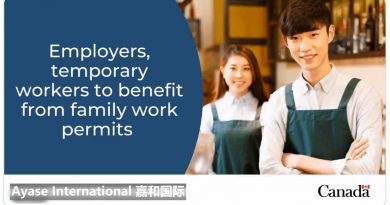Guide 3900 Steps – Sponsorship Of A Spouse, Common-Law Partner, Conjugal Partner Or Dependent Child Living Outside Canada
Note: Check “proceed with the application for permanent residence” if you submit an undertaking of assistance to support the permanent residence application of a family member or close relative on Humanitarian and compassionate considerations.
Note: If you are sponsoring your spouse or common-law partner, you cannot have a co-signer.
- Family name(s) (surname)
- Given name(s) (first, second or more)
Note: If you are sponsoring a child to be adopted in Canada who is not yet identified, write:
- your Family name(s) and
- “Child” in the given name field or leave it blank.
- Indicate the nature of your relationship to the principal applicant:
- Spouse
- Common-law partner
- Conjugal partner
- Child
- Grandchild
- Parent
- Adoptive parent
- Other
- If you chose Other, provide details (i.e., brother, sister, uncle, aunt, nephew, etc.).
- If you are a conjugal partner, provide the date you entered into that conjugal relationship.
Sponsor Personal Details
- Question 1
- Full nameIndicate your family name(s) (surname) exactly as it appears on your passport or travel document (even if the name is misspelled). Do not use initials.
Note: If you do not have a family name on your passport or travel document, enter all your given name(s) here and leave the given name field blank.
Write all of your given name(s) (first, second, or more) exactly as it appears on your passport or travel document (even if the name is misspelled). Do not use initials.
Note: If you do not have a given name on your passport or travel document, leave this field blank.
- Question 2
- Nickname/AliasCheck the box to indicate if you ever used any other name. This could include your birth name, maiden name, married name, nickname, etc.
If you checked “Yes”, indicate any other family name(s) that you have ever used.
If you checked “Yes”, indicate any other given name(s) (first, second, or more) that you have ever used.
- Question 3
- Indicate your sex.
- Question 4
- Indicate your date of birth. If your complete date of birth is unknown, use “*” (star sign/asterisk) to fill in the spaces for the year, month or day, where applicable.
- Question 5
- Indicate your city or town of birth.Indicate your country of birth.
- Question 6
- Indicate your status in Canada:
- Canadian citizen by birth
- Canadian citizen by descent (citizenship through a parent)
- Naturalized Canadian citizen (after immigrating to Canada)
- Permanent resident
- Question 7
- If you are a permanent resident or a naturalized Canadian citizen (i.e., you came to Canada as a permanent resident and were later granted Canadian citizenship), provide:
- The date on which you obtained this status (whichever is more recent)
- Your UCI (Unique Client Identifier)/Client ID number)
- Check the box to indicate if your actual full name is the same as when you became a permanent resident. If you checked “No”, provide your full name (family name(s) and given(s) name(s)) at the time you became permanent resident.
- Question 8
-
- Indicate your current marital status:
- Annulled Marriage:
- This is a marriage that is legally declared invalid. An annulment can also be a declaration by the Catholic Church that the marital union did not have a binding force.
- Common-Law:
- This means that you have lived continuously with your partner in a marital-type relationship for a minimum of one year.
- Divorced:
- This means that you are officially separated and have legally ended your marriage.
- Legally Separated:
- This means that you are married, but no longer living with your spouse.
- Married:
- This means that you and your spouse have had a ceremony that legally binds you to each other. Your marriage must be legally recognized in the country where it was performed and in Canada.
- Single:
- This means that you have never been married and are not in a common-law relationship.
- Widowed:
- This means that your spouse has died and that you have not re-married or entered into a common-law relationship.
- Enter the date (year, month, day) you were married or you entered into your current common-law relationship.
Note: This is the date your status officially changed from being single to common-law, not the date you started living together.
- Write the family name(s) and given name(s) of your current spouse or common-law partner.
- Indicate your current marital status:
- Question 9
- Check the box to indicate whether you have previously been married or in a common-law relationship. If you checked “Yes”, provide:
- Family name(s)
- Given name(s)
- Type of relationship:
- Common-law or
- Married
- Dates (From – To) for which you were in the relationship with your previous spouse/common-law partner.
Sponsor Contact Information
- Question 1
- Indicate your current mailing address (where information should be mailed):
- Post Office Box (P.O. Box) number, if applicable. If you do not indicate post office box, the Street number must be provided
- Apartment (Apt.) or Unit, if applicable
- Street number (No), if applicable. This must be provided if you did not indicate in a P.O. Box
- Street name, if applicable
- City or Town
- From the list, select the Country of your current mailing address
- Province or State
- Postal code/zip code
- District, if applicable




